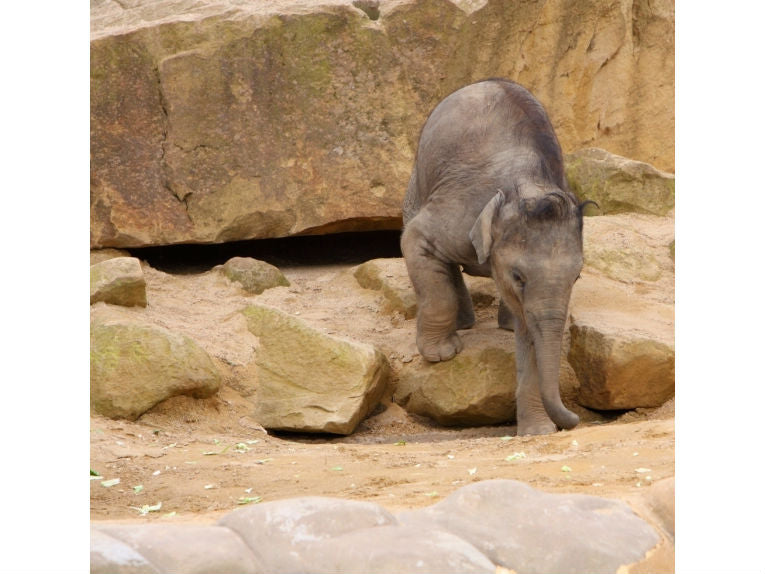Dwarf mammoths from Crete - Mammuthus creticus, the smallest mammoth species that ever existed
Victoria Herridge and Adrian Lister have solved a Cretan problem from the Pleistocene. Tiny elephants are quite normal in the Mediterranean islands, the Californian Channel Islands, Alaska and Siberia, whereby the theory that stated large mammals evolve into a smaller size-range on islands is proven. In Sardinia, one species has always been recognised, but others have been mistakenly classified as part of a mainland species, Palaeoloxodon antiquus.
In Sicily and Crete, some of the tiniest elephantids known have been found. Dwarf deer, too, are regularly discovered in these locations. These fossils from Crete mark a lower limit for elephant size. There have been giant elephants and small species, such as the currentAsian elephant, but these dwarves only occur on the said islands.
The teeth and a humerus indicate that this animal is related to a mammoth such as Mammothus rumanus. (or possibly M meridionalis). It was previously associated with Palaeoloxodon spp. (hence the similarity to our baby Asian elephant), but newer fossils and old evidence point to the thicker enamel, early wear pattern and several major mean measurements belonging to a mammoth species. As the smallest dwarf species of Elephantidae, Palaeoloxodon was naturally associated with small elephantid fossils in Crete, even though early DNA analysis showed up a mammoth link.

(The white rulers both indicate a length of 10cm); Credit: Proceedings of the Royal Society B: Biological Sciences
(Image Above): The cape where the remains are found is indicated by the upper dot on the top-left map, the lower dot indicating the port of Chania. The other photographs illustrate the mammoth-type molars and at the bottom, a fully adult humerus 9note it's only 30cm or 12").
Now that accurate measurements of more material have been compared, it seems obvious that we now have a Mediterranean dwarf mammoth, occurring, at the earliest, 3 million years ago. It was about half the size of a Sardinian relative at 310kg in mass and 1.13m at the shoulder. (Normally, elephantids are given a shoulder height, to avoid confusion with head positions in different species). Intriguingly, the Mediterranean islands were thought to have been "fragmented" around 3 million years ago, with both Sicily and Crete divided up into palaeo-islands. If this were true, it could account for the smallest mammoths and elephants being found on even smaller land masses than was previously thought.
The tiny size of this mammoth is accounted for by neotenic (early-maturing) developments. A younger animal is able to breed earlier than the ancestral species, which also tends to increase its numbers. The smaller form would then be better-suited to lower food resources or a warmer climate (such as would happen if sea-levels rose with the end of an Ice-Age). Victoria and Adrian publish their research paper today: 'Extreme insular dwarfism in a mammoth', in the Proceedings of the Royal Society B: Biological Sciences, working in the depths of the Natural History Museum, London.










